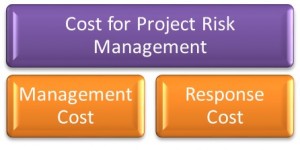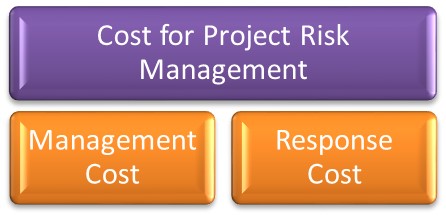In this article we start a 3-part series on the money aspects for project risk management, including a discussion on estimating, budgeting, contingency and management reserve.
Introduction
There is often confusion on how to fund project risk management activities, including the overall planning and control activities in addition to the cost of responding to risks. The confusion is also related to contingency and management reserves, how we estimate them and use them.
The PMBOK® Guide is not absolutely clear on these points. Further, organizational policies might vary from one organization to another and sometime there are even variations within the same organizations.
 The approach we offer here is based on our own research and experience. Where there are alternatives approaches we will raise them. In general, we divide the money aspects of managing risks to two parts, the management cost and response cost.
The approach we offer here is based on our own research and experience. Where there are alternatives approaches we will raise them. In general, we divide the money aspects of managing risks to two parts, the management cost and response cost.
Relations between budget, contingency, and reserve
Before we can continue with the series, we need to define the basics components of a project budget:
- Project direct costs: usually for the “technical” people to perform the work required, such as design, construction, programming, coding, etc. depending on the type of the project. These are the costs for resources, people, tools, equipment …
- Project indirect costs: usually for the project management team, project manager, and related costs to help deliver a project output.
- Overhead costs: these would be for organizational management overhead and support, which would be allocated to the project estimate, typically as a small percent.
- Other costs: such as inflation, tax, and other costs not part of the first three categories.
- The Base Budget: the base budget includes all of the above costs.
- Contingency Reserve: is an amount of time added to the base budget to cover the known unknowns = identified risks. This could be estimated based on the actual risks[1], or simplified and applied as a percent of the base budget, typically 5 or 10%.
- Project Baseline: this is a term used by some to mean the budget under the control of the project manager which includes the base budget + the contingency reserve.
- Management Reserve: this is an amount of time added by management for the unknown unknowns; the unexpected; the unidentified risks. This is typically a percent of the baseline or an allowance.
- Project Budget: the baseline + management reserve and this is what is usually approved for the project by executive management; the board; or others.
In the next article we discuss management cost and the third article the response cost.
[1]Literature on risk management typically advise that the amount of contingency should be based on the costs generated from the project risk management exercise; will discuss below.

